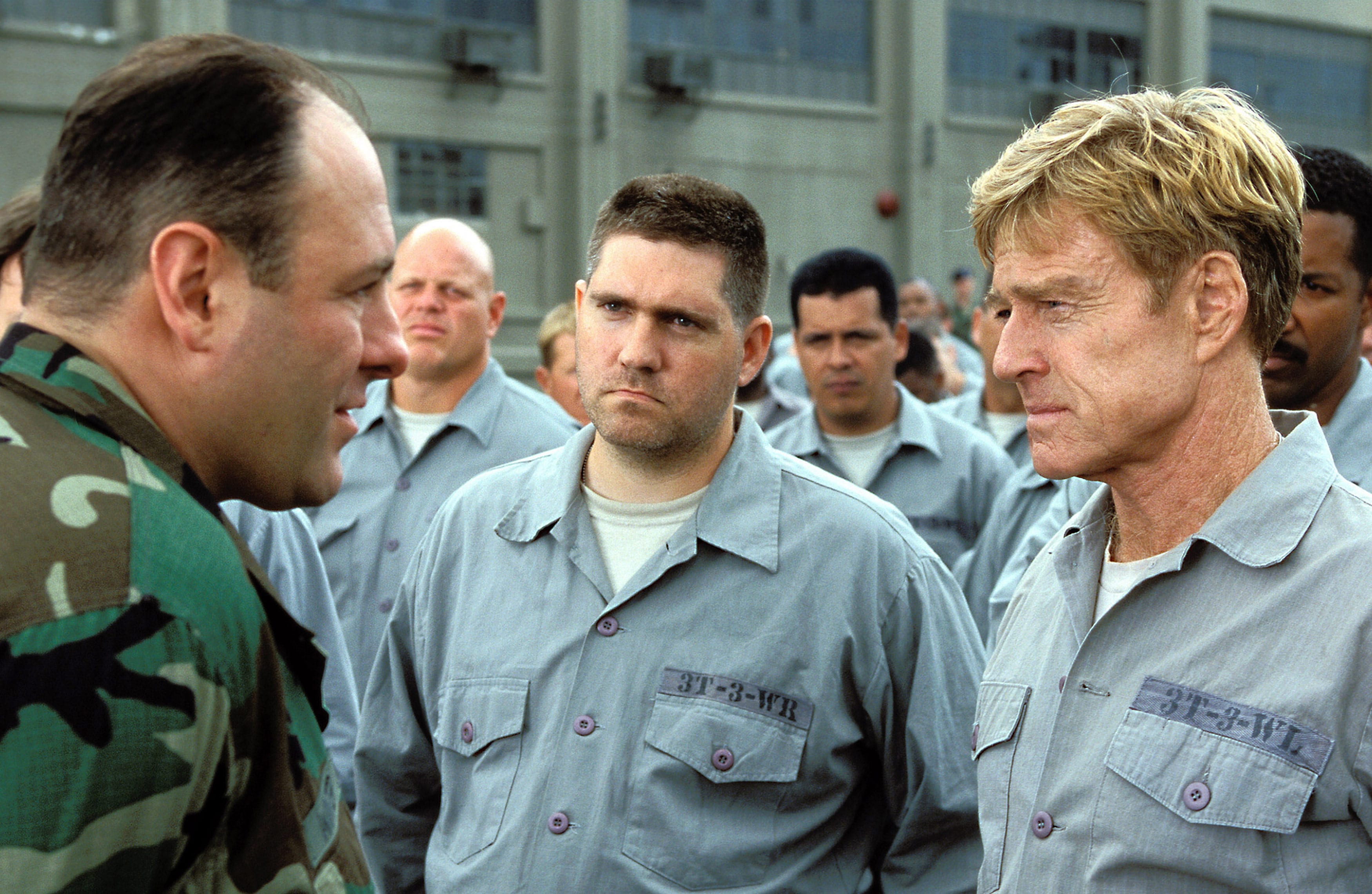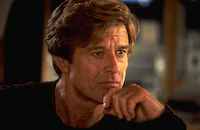The castle of The Last Castle is a military prison, the sole location in a drama about a three-star General incarcerated after pleading guilty to insubordination and finds himself drawn into a new battle: protecting his fellow inmates from an abusive warden. It's the third film from Israeli-born journalist turned filmmaker Rod Lurie, an outspoken liberal whose first two features—Deterrence (1999), about a possible nuclear attack on America from Iraq, and The Contender (2000), about a political smear campaign targeting a female vice-presidential candidate—tackled politics head on with stories that turned out to be quite prescient. He was pondering his next film when DreamWorks offered him an original screenplay, then simply titled "The Castle," written by David Scarpa and Graham Yost.
Robert Redford was already interested in the script ("I liked that it analyzed the relationship between honor and leadership," he told biographer Micheal Feeney Callan) and met with the filmmaker during a break in production on Spy Game (2001). "[Lurie] was obviously smart and he was very ballsy," observed Redford, "and he also had in his hands a great script. I thought it would be good because he was a younger voice." With Redford in the leading role of Lieutenant General Eugene Irwin, they needed an actor with the strength to take him on as the film's nemesis, Colonel Winter.
James Gandolfini made his mark on the big screen in supporting roles in such films as Crimson Tide (1995) and True Romance (1993), but he became a star playing New Jersey mobster Tony Soprano in the acclaimed HBO series The Sopranos, which earned the actor three Emmy Awards. Gandolfini signed on as the manipulative prison warden for $5 million, his biggest payday for a feature film to date, and started shooting just a few weeks after the third season of The Sopranos wrapped production. In Lurie's own words, "Jim was critical because the story needed a huge character to stand up to Irwin." Redford was equally impressed with Gandolfini. "Great actors move you," he explained. "The Last Castle had moments of the great two-hander, moments when you looked at Jim and didn't know what was coming."
The original screenplay featured no women characters. William Nicholson, who was brought in by Lurie as an uncredited script doctor, added a scene between Irwin and his estranged daughter, played by Robin Wright Penn. "I think it was the best-acted scene in the movie, maybe one of (Redford's) best-ever acting moments," reflected Lurie. Key supporting roles went to Mark Ruffalo, who had earned glowing reviews for Kenneth Lonergan's You Can Count on Me (2000), and Clifton Collins Jr., whose performance as a young Marine became the actor’s breakthrough role.
The film takes place almost entirely within the walls of the military prison. Lurie and his production team found their castle in the decommissioned Tennessee State Prison, a massive Gothic structure built in the late 19th century. The prison, which was closed in 1992, had previously been used for Against the Wall (1994) and The Green Mile (1999) and the State of Tennessee gave the filmmakers free use of the facility. The production team refurbished the prison and constructed new buildings and walls where necessary, including two towers and a metal walkway. The interior cell blocks didn't serve Lurie's dramatic needs, so production designer Kirk Petruccelli built a separate set featuring prison cells that faced each other.
The film, since retitled The Last Castle to avoid confusion with the recently released Australian comedy, was slated for released in October 2001 with a poster featuring an American flag flying upside down, a sign of distress. The terrorist attack on the World Trade Center in September, however, changed the national attitude overnight. A film critical of the American military became far less appealing the autumn of 2001 and the film's ad campaign was shifted accordingly, but it wasn't enough to bring in audiences. The $72 million production made only a fraction of its budget back.
For his part, Redford was only slightly more circumspect in his promotional interviews. "When somebody raises a voice of any kind of dissent right now, they’re being accused of being unpatriotic," he cautioned while appearing on CNN. "That’s dangerous. That’s not healthy. The right to disagree is part of our democratic system – it’s what we fought for."
Sources:
James Gandolfini, Dan Bischoff. St. Martin's Press, 2014.
Robert Redford: The Biography, Micheal Feeney Callan. Alfred A. Knopf, 2011.
"Yonda Lies The Castle of Tony Soprano," Stax. IGN, January 8, 2001.
"The Castle Can Be Found in Tennessee," Stax. IGN, January 11, 2001.
DreamWorks Electronic Press Kit
IMDb

















